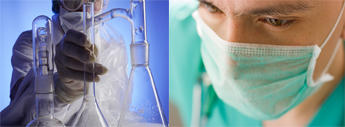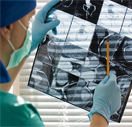Developing a New Method Relying on Doxorubicin Autofluorescence to Measure Intracellular Localization
Zsófia PÉNZVÁLTÓ1,2, Bálint TEGZE1,2,
Dániel TEKNÕS3, Balázs GYÕRFFY1
1Joint Research Laboratory of the Hungarian Academy of Sciences and the Semmelweis University, 1st Department of Pediatrics, Semmelweis University, Budapest, Hungary
22nd Department of Pediatrics, Semmelweis University, Budapest, Hungary
3Uzsoki Street Hospital, Budapest, Hungary
Doxorubicin is an anthracycline antibiotic used in solid tumor’s
chemotherapy. It interacts with DNA by intercalation and inhibits
the nucleic acid synthesis; hence the doxorubicin resistance can be
related to decreased nuclear localization. Doxorubicin is autofluorescent,
hence the intracellular localization can be measured by fluorescent microscopy. We developed a protocol to measure doxorubicin’s
intracellular localization and investigate the correlation
between intracellular localization and the degree of resistance.
Doxorubicin sensitive and resistant MCF7 and MDAMB231 cell lines
were used in the study. We used 5.000 cells/well in Leibowitz-15
medium. We let them adhere for 24h, then used a doxorubicin treatment
(0.5 μM). After 24 hrs incubation we fixed the cells and made
photos with fluorescent microscope. Red fluorescent protein filter
(excitation filter: 535–555 nm, emission filter: 570–625 nm, dichromatic
mirror: 565 nm) was used. We assessed fluorescence with 100,
200, and 500 ms exposition time, 20x–40x enlargements. Photoshop
was used to combine fluorescent images with light microscope pictures
of the same area. The drug resistance of the cells was measured
by MTT cell proliferation kit.
Our results demonstrate the capability to measure doxorubicin
intracellular localization. The background fluorescence did not
influence the results. The doxorubicin localization usually is
intranuclear, but we unearth cell lines where it was outside of the
nucleus. There was not significant relationship between the intracellular
localization and the degree of the resistance.
Our method is suitable to measure the intracellular localization of
doxorubicin. A clinical study investigating a suitable sized cohort
of patients with documented doxorubicin resistance could be used
to assess the clinical applicability of our technology.




